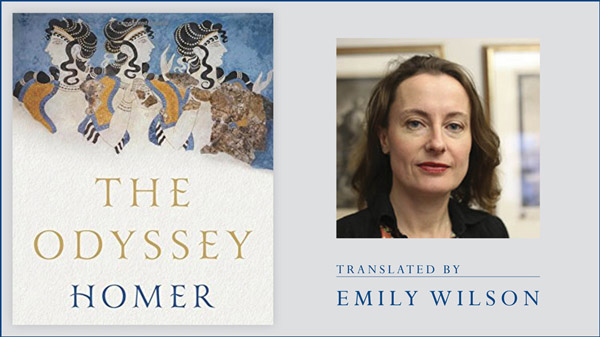Exploring translation, diversity and gender
Posted on: 11 July 2018 by Lyn Marven and Niamh Thornton in 2018 posts

In light of Emily Wilson's translation of the Odyssey, which is the first translation into English by a woman, Niamh Thornton and Lyn Marven reflect on translation and diversity.
When we teach translation we are guided by an authentic assessment approach and by our research expertise and experience as translators. Underpinning all of it is an attention to diversity, gender, and intersectionality, which leads us to reflect on who gets translated, who gets to translate, and how to address gender shifts, ambiguities, and differences that are determined by language and cultures.
There are variables between the languages. When translating from Spanish, as a romance language, it is necessary to consider how language is gendered in the source text and how English navigates this shift.
This intersects with other issues, particularly race, class, and identity.
For example, in recent years there has been a growth in the use of ‘x’ instead of ‘o’ and ‘a’ to designate the gender of the person speaking or being spoken about for some identity markers. There are lively debates related to Latino/a/x and Chicano/a/x (also Xicano/a/x) in the US that are more than just about gender they are about a complex intersection of other issues.
Elsewhere, the use of the ‘x’ (or ‘@’ as another alternative) has been at the centre of intense debates that arose in Spain from the 15M/indignados movement. Language and its usage carries considerable historical weight that needs to be considered when translating.
The focus is not just on word endings. Verbs and subject/object issues can inform translation and have a substantial impact on the interpretation of a text. Translators working from languages such as German, where all nouns have grammatical gender, into English may find it hard to translate word-play or anthropomorphisation which relies on the use of gendered pronouns in the source text.
The source language (the one you are translating from) has particular characteristics, so too does the target language (the one you are translating into). We ask students to think about how English may have gender biases.
Research into the language used to describe female and male professors in the US and guidelines on how to write a reference, have proven useful ways into thinking about how word choices can be determined by gender biases without being specifically marked.
Even dictionaries are not without their biases: among the many options for translating the German term ‘der Mensch’ (individual, person, human – a grammatically masculine noun, but gender-neutral in meaning) you will also find ‘man’ and ‘mankind’ for when the noun is used generically. This is a form of language that has been contested in English and many now consider this usage outdated. Translators need to be alert not only to the range of meanings and contexts, but also to the evolving connotations, denotations and other markers of style and register in words in their target language.
Translation is taught throughout the Modern Languages and Cultures degree, but in the final year we have two optional modules: a theory module with practical assessments (MODL311) and a project module, where you can choose a text that has not been translated before.
Texts chosen for translation have ranged from legal case reports through to graphic novels, children’s literature, comedies and thrillers, as well as philosophical essays and a history of FC Barcelona.
Discover more
- Listen to Niamh and Lyn talking about translation and diversity with Dan Damon on BBC Radio (52 mins)
- Study a Modern Languages and Cultures course at the University of Liverpool
Keywords: Gender, Languages, Translation, Diversity, Liverpool, University.